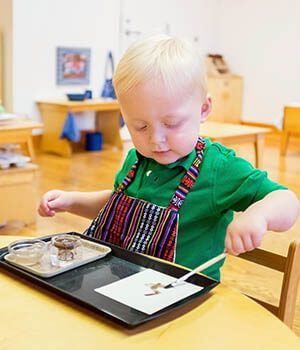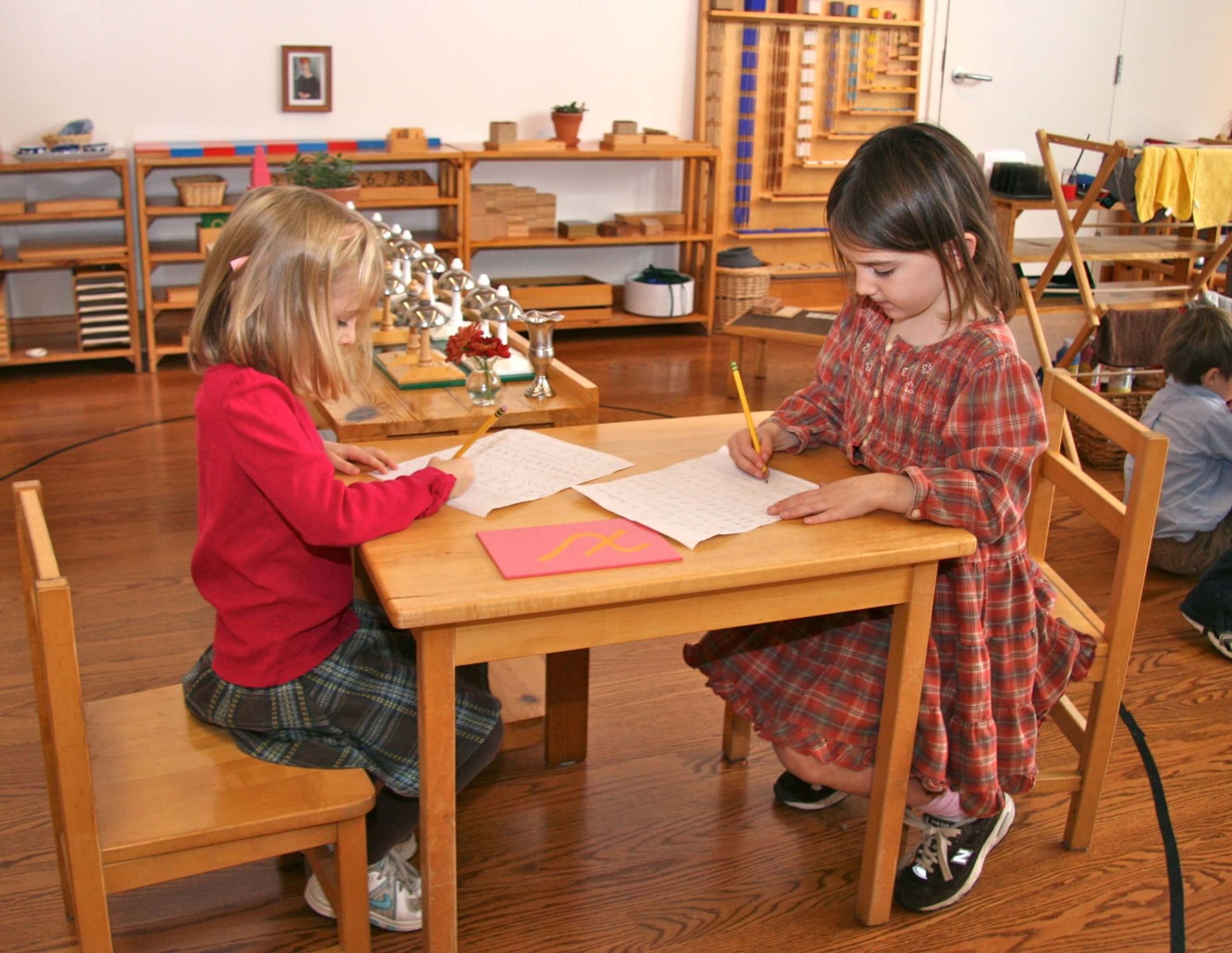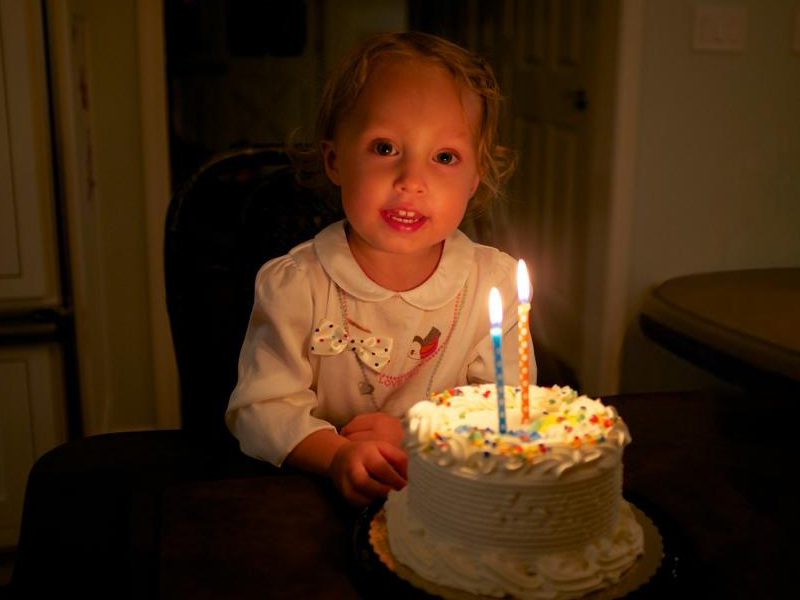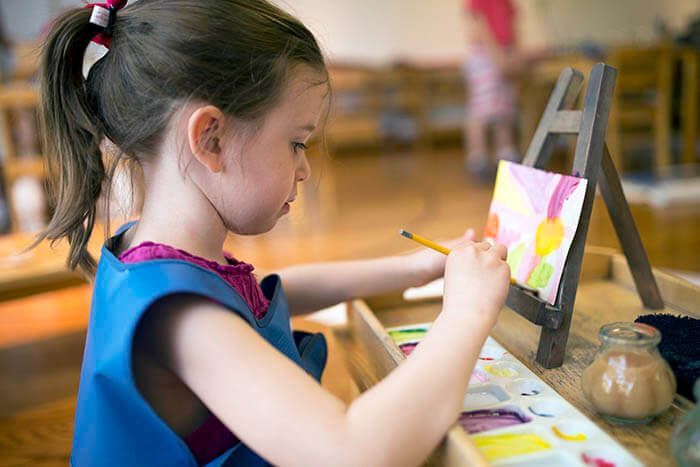
Orienting to Inner Order
Imagine you are told you are on a bus heading to a camp. You're told you'll be there for a few weeks, that there will be activities every day, and that you'll be staying 24/7. Here are some of the things you would want to know right away: Where are we? How long will we be here? Why are we here? What will we be doing? You'd want to know the layout of the grounds: Where will I sleep? Where will we eat? Where is the bathroom? And when do we get to use it? The information you’d be seeking would have to do with orienting yourself and creating inner order. The unpredictability would consume you–if you were taken to interesting lectures, you'd be thinking of these more pressing questions the whole time. You wouldn't be able to focus or learn or grow until you satisfied your need for this more pressing information.
This is a bit of what life is like every day for babies and young children. Dr. Maria Montessori recognized young children’s quests for inner order: they seek it, they crave it, and they try to create it. You may notice they want to do things at the same time every day, that they want you to read the same book aloud, they line up the boots in the hallway and they move objects of the same kind into one place. Why?
Montessori proposed that because the young child is building his own mind, he needs external order. He needs to build a mind that is oriented to his environment, can organize incoming information, can make sense of information, and can create its own inner order. Montessori observed that this need is so strong that children get upset when order is absent, in ways that we sometimes fail to recognize.
Routine, inner order, orientating ourselves in time and in space, predictability–these all have to do with the mind's ability to measure. Every person, Montessori explained, has a mathematical mind in this sense. We are attracted to measuring, and we do it automatically; we predict outcomes and we seek out information that helps us to determine where we are, what's going to happen next, and where objects are to be found. Young children have the important task of orienting themselves and forming their minds, every day.
Developing Inner Order through the Organization of Spaces
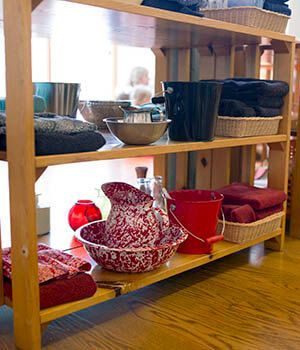
Some of the first measuring a baby does in recognizing objects, patterns, and sequences in his physical space. A baby or young child must be able to move around in a room so that he can learn about distance, the amount of effort required to reach an area, the relationships between objects, and between objects and himself. He learns to associate certain areas with certain activities. He needs us to provide consistency so that he can recognize his surroundings, take mental measurements, form connections, and give his attention to processes. So, how can we help?
First, think through the locations where certain activities occur: Is there a certain chair you sit in to nurse your baby? Is there a certain place the baby lies down to sleep? Does your young child take a bath in the same tub every night?
The child who has consistency begins to recognize basic patterns and can associate certain activities with certain spaces. The predictability soothes him and satisfies his quest for inner order, and thus he begins to form some understanding of his little universe. Then, his mind is free to begin tackling other ideas. The baby who is getting this kind of support tends to be bright-eyed, outward-looking, calm, attentive, and ready to learn new things.
Developing Inner Order through the Organization of Objects
What about the objects or toys in a child's environment? We can help her satisfy her need for order by first limiting the number of toys that are out at any given time. Put some toys away in the closet and rotate them every few weeks. By reducing the number of things or books out on the shelves, we give the child the chance to really look for detail–to examine each toy and explore all it has to offer. With too many things out, young children tend to flit from one thing to another, rush through playing with each one and be overwhelmed when it comes to returning them to their places. Having too many objects available is too much for a young child to organize.
We know it's important to support young children in developing their concentration. When we notice a child is not focusing, the tendency is to think that she's bored and needs more choices, but be aware that the opposite is more likely true. When there are only a few choices available, a young child can focus on them, then return objects to their places after she has played with them. For instance, set out only three or four books instead of an entire shelf, place a set of six language cards out instead of a whole box.
We can also organize them by category, then arrange sets of pictures and rotate them instead of having them all out at once. Gradually, children become intellectually ready to add more categories and embrace the challenge of re-arranging the sets. This may happen over several years. If we begin giving a 15-month old very small card sets (of three or four cards in a set), we may have several complex sets out by the time they are five years old.
If objects are kept on a low shelf, a one-year-old will begin to find her things there and even put them back. She may delight in moving the objects around, from a top shelf to a lower shelf and back again. By age two, the child who has had order in her environment will begin to replace an object to the very spot it came from. There is a gradual understanding of, and seeking of, inner order.
Our role in this evolution is to maintain the order in levels until the child takes over each level for herself. Ask that all the adults in a home contribute to this by replacing things on the shelves where they belong. The child may leave a toy out on the floor, but when she finds it back in it's place many, many times and perhaps for months, she eventually begins to put it there herself. Continue to do this, to provide order for the child's mind to grasp and to embrace. This is the foundation of a child's thinking mind.
Developing Inner Order through Sequences
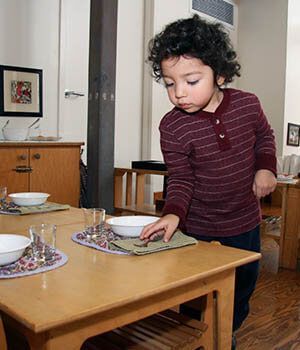
Young children begin to recognize simple sequences within our practical life activities. But this can't happen if the adults do something differently each time, or we keep changing the activity. The young child who wants to bake bread every single day the same way, with the same five ingredients week after week, does so because she is studying the sequence and the very idea of sequence. We do not quiz her or expect her to do the activity without us, but we repeat it, again and again, and we invite her to do what she can. The young child has to experience the sequences; she can’t just watch. Her hands and body must move through sequences in order to fully process them.
A simple sequence within the evening routine might be: Your daughter washes her hands, eats dinner, has her bath, gets into bed, and thinks, "Daddy sits on this side of me, reads me this book, then we say the same prayer, he says goodnight at the door and then leaves the room.” A very young child craves a sequence because it gives her bearings.
As a side-note, if your three-year-old is demanding that you do things the same way every time and throwing a tantrum when you don’t, this may have more to do with the development of her will, because she is trying to see if she can control other people. Being respectful of a child’s need for inner order does not mean allowing children to run the show, but rather, taking into account what they are working on.
Developing Inner Order through Routine
If we don't maintain family routines, our children may constantly wonder, “Where am I in this world of flurrying activity? Mom is on the phone, it’s a different meal, Dad is here one evening, not the next, then we go to the grocery store, but I don't recognize this aisle, where are we driving…?” There is a multitude of unknowns for our babies and children every single day regardless of how much we try to keep things consistent. That's a given, so imagine if we don't try to keep anything consistent at all.
Think of the unsettling novelty in my example of being taken to a camp, realizing that the answers to your inevitable questions would serve to orient you. You’d know what questions to ask because as an adult, you understand order and you know what information will help you to orient. Consider that children, who are going through so many things for the first time, are still creating their inner order, so they don’t even know what questions to ask yet. They often reveal their discomfort by crying or acting "difficult."
Some children may show us they are craving routine and order when they begin having trouble concentrating in their classrooms, creating order in their own work, or following logical sequences in school. If a child’s afterschool routine is erratic, she may spend the whole morning in her classroom wondering what is going to happen afterwards. If different people pick her up each day, she may spend time wondering, “Who is going to pick me up today?” Telling her beforehand can distract her as much as the wondering, so the best remedy is to try your best to keep things consistent. That way, the announcements that someone different will pick her up will be minimal.
It also doesn’t do much good to tell a very young child when to expect something to happen because they have not yet developed an orderly sense of time. A child under age five does not know whether to expect something in an hour, in ten minutes, or in a month. By announcing upcoming events, adults may infuse young children with anxiety. It’s like saying, "Look out! Something’s coming up!” when they really need to concentrate on the present moment, instead.
I used to teach a three-year-old who would start telling me in October, "We're going to Denver tomorrow, we're going to Denver tomorrow!" He would say that almost daily until February. It was such a relief when the annual family gathering passed, because he finally started working in class. He just couldn’t settle down and concentrate until the anticipated event occurred. It’s true that every child is different–some are more sensitive to this than others–but it doesn't have to do with how smart they are, it’s just characteristic of their developmental stage. It is best to wait until very close to an event to begin talking about it.
Young children who live with consistent routines are typically better at handling occasional changes, like the spontaneous trip or event. This works if we prioritize the routine. Because of disruptions such as illnesses or doctor appointments, it is not always easy to give our families a steady routine. Therefore, if your relatives accuse you of being too consistent, you're probably serving your youngest children’s needs very well!
As your children approach age seven, they will change dramatically. Elementary-aged children have developed their inner order and they’re ready to move on. They are not easily thrown off by changes in routine. In fact, they need to get out in the afternoons, go to a weekly tennis lesson with other children, to be around different adults, and have unstructured play time with others. They will be prepared for this stage after receiving the support they needed under age six: steadiness, simplicity, time in nature, your calm companionship or that of another adult, and practical life activities of the home such as cooking, baking, cleaning, gardening or sweeping.
Adults naturally have very different needs than those of very young children. We mustn’t feel guilty making time for ourselves when we can. Just keep in mind that an adult's need for changes in scenery and routine doesn't mesh with a young child's need for routine, so don’t try to combine your activities.
I remember a funny conversation with a fellow Montessori trainee who told a story of watching a frustrated two-year-old throwing a tantrum at a Starbuck’s while his mother tried to appease him and visit with her friends. We could relate to that mother’s craving for adult companionship, but as my friend lamented “Paula, there is nothing productive for a two-year-old to do in a Starbucks!”
While I laughed at her exclamation, I thought of how important it is for us to arrange our time so that we are not disappointing our littlest children and ourselves. Make time to meet your own needs as an adult as regularly as you can.
Montessori shows us that infants and young children need to be actively involved–more than anything–in the routines of the home. Making it a personal goal to reconnect with all those household routines that we call practical life activities can ground you and simultaneously help your young children develop their inner order.
Conclusion: Stick to the Spirit of Supporting Your Children’s Need for Order
Please don’t succumb to the myth of perfection. Will you be able to bathe your child in the same bathtub every evening? Occasionally you won’t. Will the toys always be placed back on the shelf in the same order? You’d make yourself and everyone else in the home nervous wrecks if you insisted on it. Our homes will not be like Montessori classrooms, nor should they be. They are homes.
But understanding that our young children have this basic need for inner order will help us to support their development. We must do the best we can, and keep the spirit of love, compassion and acceptance alive, which is so much more important than following any specific suggestions. So, try to do some of what I suggest above and then soften your expectations just a little. We do best by not getting too uptight and severe in our expectations of ourselves or of others.
When our little children have their need for order attended to, they are much more at ease and able to adjust to the unexpected and spontaneous things that arise in life. Every child goes through a period of time when he or she is most sensitive to order, but you will notice that this passes over time. The respectful thing we can do is to acknowledge that our infants and young children have this need and support it when we can by setting up routines, sequences, and physical order whenever or wherever we can, then let our children interact freely with the environments we have prepared for them.
Helpful Resources:
- The Organized Mind: Thinking Straight in the Age of Information Overload, by Daniel J Levitin (http://www.penguinrandomhouse.com/books/313653/the-organized-mind-by-daniel-j-levitin/9780147516312/)
- The Absorbent Mind, by Maria Montessori (http://www.montessori-namta.org/Books-by-Montessori/The-Absorbent-Mind)
- Montessori Services Catalog (http://www.montessoriservices.com/)

